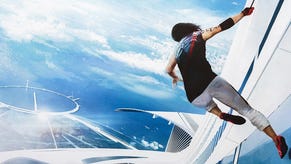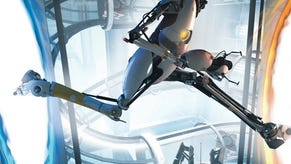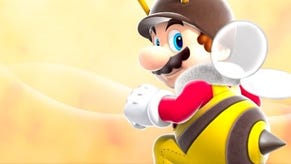Super Mario Galaxy 2
Baby universal.
Nintendo hasn't released a straight-up sequel to a Super Mario game in almost two decades. Ignoring nominal sequels Yoshi's Island and Wario Land, Mario's own adventures - from perfect World to muddy Sunshine and the transformation of old Super Mario Bros. to New - have been a cascade of revisions and re-versions, almost always familiar but never the same.
You could even say that about Super Mario Galaxy itself. The 2007 Wii classic hit the reset switch in virtually every level - sometimes several times per level - as it spun Mario's world upside down, inside out and round and round. Super Mario games have always liked playing with the rules rather than by them, but none have ever done it with such dizzy gusto.
By sending Mario into space, Super Mario Galaxy could ignore what little logic the Mushroom Kingdom ever had, taking its only immutable law - gravity - and twisting it around tiny 3D planetoids, or flipping which way was up in side-scrolling sections that almost mocked the series' roots. Levels could be one-off gameplay gags or fragmented mini-epics in which the plumber would slingshot through the ages of Mario, from impossible future to retro reference and back again.
So, Galaxy is as deserving of a production-line sequel as any game in this illustrious canon. All Super Mario Galaxy 2 has to do is to live up to the dense invention and unstoppable momentum of its predecessor. That's a tough challenge, of course - but not long into the new game, you know Nintendo's Tokyo studio has risen to it.
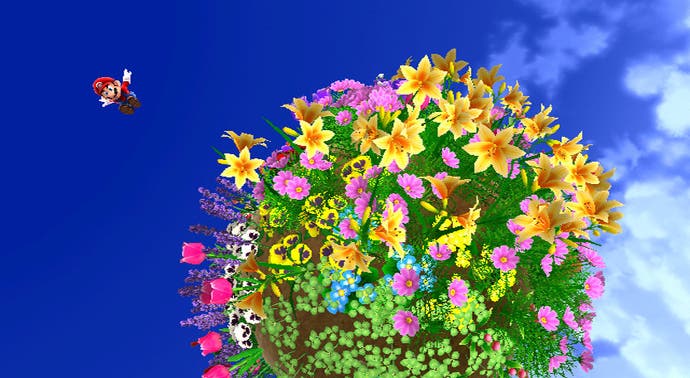
Inevitably there are moments of déjà vu. The intro rattles through a telegraphed version of the original's misguided attempt at grandiose scene-setting, in which Mario's nemesis Bowser rather perfunctorily kidnaps Princess Peach. "Have fun with your stupid mushrooms," he bellows, and we're off.
Like Super Mario World, the game proper starts outside Yoshi's house - but this time it's floating on an asteroid, and you'll pass under it, through it and out of the chimney pipe before shooting off through a series of miniature levels that don't so much lead as shove you through a crash-course in Galaxy's wraparound, 360-degree platforming. Just as in the first game, you need to smack a Piranha Plant baby-boss's bottom to earn your first star.
Some settings and even level layouts are strikingly familiar. They're usually put to a new purpose, but there are some direct quotes from Mario Galaxy too. (One late level surprises with a note-for-note reconstruction of a moment in Mario's more distant past, and might reduce the unwary fan to actual nostalgic tears.) Such things are dispensed with quickly enough to come off as tribute rather than rehash, and if you didn't play the first game they'll just seem like yet another bright stitch in this tapestry of fun.
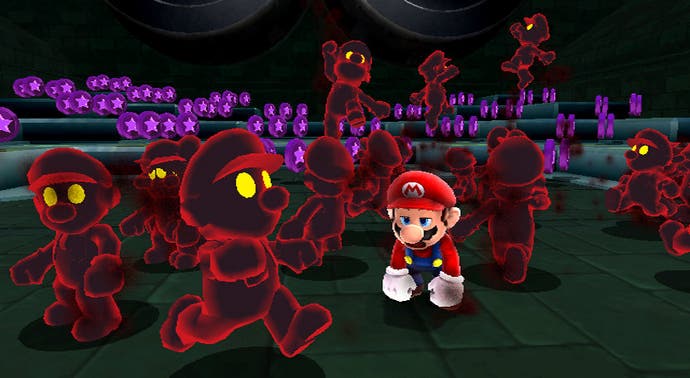
A tighter, more organised and more economical game than the first, Super Mario Galaxy 2 rolls that glorious tapestry out before you in plain view and at a brisk pace. It shows only limited interest in anything that isn't catapulting Mario, soaring and whooping, through the cosmos to his next challenge.
It does give you a starship home, but instead of the original's befuddling Disney fantasy with its melancholy space-princess, you get a jolly giant Mario head made out of brickwork and turf and captained by a fat, avuncular purple star. Even the helm looks like it's smiling.
Although gradually populated with friends, diversions and chances to earn 1-ups, Starship Mario is not actually a hub world. The magic and mystery of Mario 64's castle can never be recaptured, it turns out, and Galaxy's scattershot worlds can't be tied together thematically, so time and effort are saved with point-to-point world maps in the New Super Mario Bros. style. Each of the six worlds is capped by a Bowser or Bowser Jr. boss stage, and as with the other 3D Marios, you'll regularly need to revisit previous areas - or Galaxies - to earn enough stars to progress.

